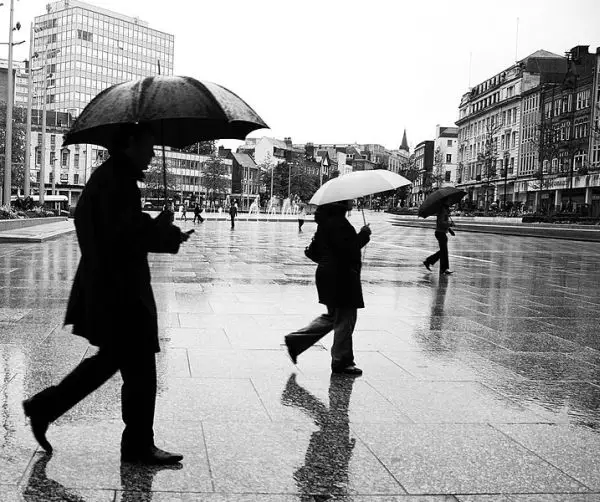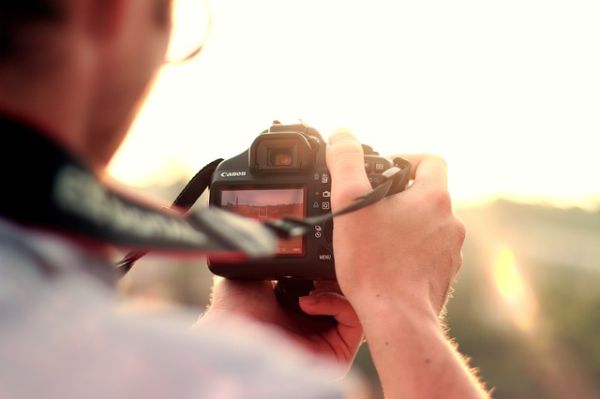For beginners, learning the ins and outs of the fundamentals can often seem daunting. Intermediate photographers might feel confident of their grasp of the photography basics, but find themselves lacking inspiration. Even seasoned photographers might occasionally find themselves stuck in a rut.

So we put together a list of tips you can use to get your shutter firing and improve your photography. If you’re a beginner, you can start at the beginning and work your way through the list. Or if you’re just looking for something to kick-start your creative engine, feel free to jump around the list.
1. Take lots of photos.
The first tip on the list may seem obvious, but it’s the most important tip on the list. If you take away only one lesson from these tips, this one is numero uno. The only way to get better is to shoot as much as you can.

Chances are you’re shooting with a digital camera. If that’s the case, then you can shoot to your heart’s content with little worry. So long as you’ve got a spare battery and a couple of extra memory cards stashed away in your bag, your camera should basically become an extension of your hand.
2. Review your work.
If you’re going to take lots of photos, you’re going to end up with, well, lots of photos. In order to figure out what you’re doing right and, more importantly, what you’re doing wrong, you’ll have to learn how to critique your photos.
Get into the habit of making a ritual out of reviewing your work. Take time to export your photos to your computer after every shoot instead of letting your memory cards fill up.
When you look through your photos, take some time to figure out what you might have done better with the photos you don’t like.
Likewise, pick out the photos you’re happy with. What about these photos do you find appealing? This will help you as you find your own visual style.

3. Get to know your camera.
Learn everything you can about your camera. Read through the manual and experiment with any special features your camera has to see everything it is capable of.

Shoot in aperture and shutter priority modes. This will help you better understand how each one works and how different settings produce different results.
4. Learn from the pros.
One of the wonders of the Internet is how it enables people to share their knowledge. As a result, many professional photographers produce their own video tutorials and product reviews. Searches for just about any topic will produce a wealth of high-quality, professionally produced videos. We’ve even created a list of 25 of our favorite Lightroom tutorials. And be sure to check out our very own online resources.
5. Break your routine.
Change up your shooting environment. Go on hikes to shoot nature. Go to outdoor public events to shoot photos of people. Ask friends to volunteer for portraits.
Even if you’re not interested in certain types of photography, you’ll likely learn some things you might not have by sticking to your comfort zone.
You might be interested primarily in street photography, but discover that you really enjoy shooting intimate portraits as well. If you find yourself cooped up indoors, pack up your camera and take a walk.

If you decide to stick to your wheelhouse, you’ll at least learn something new about your preferences as a photographer. And you might actually discover a new love. You’ll never know until you try.
6. Learn (or brush up on) the basics of composition.
You’ve got your camera in hand. You’re snapping photos of everything you see. You’ve got the hang of getting your exposures just right. But your results don’t turn out to be as great as you thought they’d be. Why is that?

The answer is likely composition, which is just a word that refers to ways you can frame your subjects to create and increase visual interest. There are some fundamental rules that can help you with this, such as the rule of thirds, using diagonal lines, recurring patterns, etc. Even if you’ve studied them before, going over the basics might unearth some other approach you hadn’t considered before.
7. Get familiar with some photo editing software.
In the past, editing photos was primarily the purview of professionals. But with advances in technology, everyone and anyone can edit his or her photos with ease. You can see this in the popularity of filters, which are the simplest means of changing the look of a photo.

From there, web-based picture editors such as Pixlr offer free, simple ways to adjust many aspects your photos. If you’re feeling ambitious, you can try a photo editing program. Some, like Gimp and LightZone, you can download and use for free. Or if you’re ready to invest a little money, you can go with professional programs like Adobe Photoshop and Lightroom. And check out our free Photoshop Actions package and our free Lightroom presets.
8. Find other photographers and check out their work.
Photography is more popular than ever, so there’s no end to the number of fellow photographers out there. One of the easiest ways to find and connect with others is through a photography-based social network. There are many free options, such as Flickr and 500px.

Sign up for a free account and start looking through other people’s work. Leave comments on pictures you like. You might be able to meet new people and have conversations with established photographers who might be willing to share some advice.
9. Do a little history homework.
This may not sound fun, but you might be surprised. Find out which photographers were and are the most well-known in your area of interest. Look through their work and discover what inspired them to take pictures. If you’re up for it, go to your public library and sit down with a stack of photography books. This might help with tip number 5, as well.
Also, check out our amazing collection of photography documentaries.
10. Keep taking photos.
Yes, we covered this already. But clicking the shutter is the most important step toward achieving greatness. You can read every article and watch every video, but if you’re not shooting, you’re not getting better.
What has helped inspire or teach you to become a better photographer? Let us know in the comments below!









0 comments